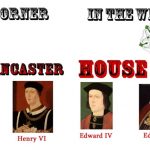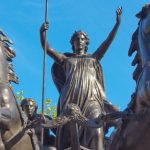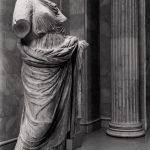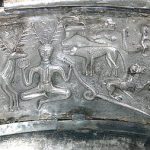
Tudor Enclosure Movement
After last week’s blog post on enclosure, I felt the need to go back further in time to understand the importance of enclosure in English land policy. I previously mentioned that enclosure first became prevalent during the Tudor dynasty, but…
Week 3: secondary research
As we move into using more secondary as well as primary sources, I want to help out a bit with finding good secondary sources. When historians use the term “scholarly article”, they usually mean something published in a peer-reviewed journal….

Queen Boudica’s Sack of Londinium
After Queen Boudica sacked Londinium in 61 AD, it was rebuilt as a Roman-planned town to consolidate control over the region. Queen Boudica’s vicious sack of Londinium revealed how poorly planned the port city originally was. Queen Boudica was married…

Ebb and Flow of Fashion and Religion
Artist: Unknown Title: Marble statue of a woman, suspected to be Themis Date: 2nd half of the 4th Century BC, Late Classical Link: http://www.metmuseum.org/toah/works-of-art/03.12.17/ Comment: With the onset of concepts like epicureanism and individualism we see a “release” or freeing…

Congruity in Iron Age Art
The European Iron Age is a sub-period that marks the transition from prehistoric time to historic time. Ironwork is believed to have been introduced to Europe from Caucasian settlers during the late 11th century B.C. This is important to note,…

19th Century Enclosure Movement
The “enclosure movement” in the 19th century encouraged a large demographic migration of people from the English countryside to city centers, speeding up urbanization. Enclosure is the process of converting land from public ownership to private ownership through capital acquisition….
The Earliest Enlightened Thinkers
Based on archaeological evidence the Neolithic peoples can, in a variety of ways, be considered enlightened thinkers. Construction of the Thinker of Cernavoda (unknown artist, around 5,000 BC, http://www.visual-arts-cork.com/sculpture/thinker-of-cernavoda.htm) itself took some knowledge and understanding of materials, tools and dimension…

Recent Comments